You will likely depend entirely on your investment portfolio and savings during retirement. It’s important to be prepared for this and not have any surprises.
One way to reduce retirement anxiety is by maximizing your 401(k) employer match. This is free money that can help you build wealth faster.
Tax-Advantaged Savings
Taxes are unavoidable, but you can save money by investing in tax-advantaged accounts. These savings and investment vehicles offer special tax benefits based on how they’re funded or when you withdraw the funds.
You can find various tax-advantaged accounts, including retirement plans like 401k retirement plan and individual retirement arrangements (IRAs), health savings accounts, and education savings accounts. Each report offers a unique set of tax benefits, such as deducting contributions from your taxable income, deferring taxes on investment earnings until you retire, or avoiding paying taxes on withdrawals for qualified expenses.
It’s important to save in your employer-sponsored retirement plan when possible, particularly if your company offers matching dollars. Amis says not contributing enough to take advantage of this free money “would be a missed opportunity.”
For high-income earners, it’s also important to diversify their long-term investments across several account types. This is especially true for those who expect to be in a higher tax bracket at retirement than their current rate. Tax-exempt accounts, have a lower rate of taxation when withdrawn, or have no mandatory distributions (like a Roth account) are all good options.
However, it may make more sense for some households to allocate the remainder of their available savings to a taxable account. This will give them access to their investment funds with few restrictions, penalties, or minimum contribution limits and the flexibility to adjust their allocation as they learn more about their financial goals and circumstances.
Matching Contributions
One of the best ways to build wealth with a 401k is by taking advantage of employer-matching contributions. If your company offers this benefit, save enough of your paycheck to get the full employer match. It’s free money and can help you boost your savings potential for years.
Younger investors often focus on the investment choices in their retirement accounts, but they shouldn’t ignore the most important factor: how much they save. To retire comfortably, a person in their 20s should try to save 10% of their income. Don’t worry if that’s unrealistic; even a tiny amount of saving over time can add up.
There are also tax-advantaged savings choices for persons without access to a workplace retirement plan, such as an individual retirement account (IRA) or a simplified employee pension (SEP) for self-employed people and small business owners. It’s crucial to invest frequently and use a dollar-cost averaging technique where you consistently invest the same amount of money, regardless of your account. By doing this, you can smooth out market fluctuations and ensure you’re buying more shares when they’re cheap and fewer when they’re expensive.
Investment Options
Your retirement account investments majorly affect how much your savings grow. But the right investment mix depends on how many years you have until retirement, how much your employer matches and other factors.
A 401(k) typically offers a small selection of stocks, bonds and mutual funds. It’s usually easiest to invest through a target-date fund, which automatically shifts from more aggressive investments to more conservative ones as you get closer to retirement.
Stocks tend to perform best over the long term, but they have risks that market downturns can magnify. Investors can help reduce risk by keeping a balanced portfolio that includes stocks and bonds, avoiding excessive debt and staying invested during periods of volatility.
Young investors can also boost their returns by focusing on their saving rates rather than on investment choices. Studies suggest that someone in their 20s must save 10% of their income to retire in decent shape.
If your employer doesn’t offer a 401(k) plan or you’re self-employed, other savings options include opening a traditional or Roth IRA or a Simplified Employee Pension — or SEP IRA — account. These accounts often have higher contribution limits than a 401(k). You can also diversify your savings across multiple assets, including real estate, which tends to appreciate over time, and cash reserves.
Borrowing or Withdrawing Money
A 401(k) allows you to save tax-deferred money. It also offers flexible investment options, enabling you to choose how your funds are invested. This helps you make wise decisions about retirement savings and future wealth building.
It’s wise to have an emergency fund to pay for unforeseen costs like a high-priced car repair or medical bill. Financial gurus advise having three to six months’ worth of monthly payments in savings.
Another reason to build an emergency fund is to refrain from using credit cards or other high-interest loans in need. If you have a 401(k) account, it’s an excellent choice for financing a crisis because the interest rates are much lower than those on most credit card accounts.
You’ll have other sources of income during retirement, including Social Security payments, annuities1, and other investments, as well as growth assets such as stock dividends and distributions from mutual or exchange-traded funds. Consider withdrawing some money from your workplace retirement plan with Substantially Equal Periodic Payments (SEPP), depending on your circumstances. The benefit of this type of withdrawal is that it’s not taxable as long as the amount withdrawn doesn’t exceed the account balance. In addition, it’s an option that could save you on taxes and fees compared to other types of distributions.









